Political Parties and Non-profits Options
How might we encourage political parties and non-profit to have an online store on Redbubble?
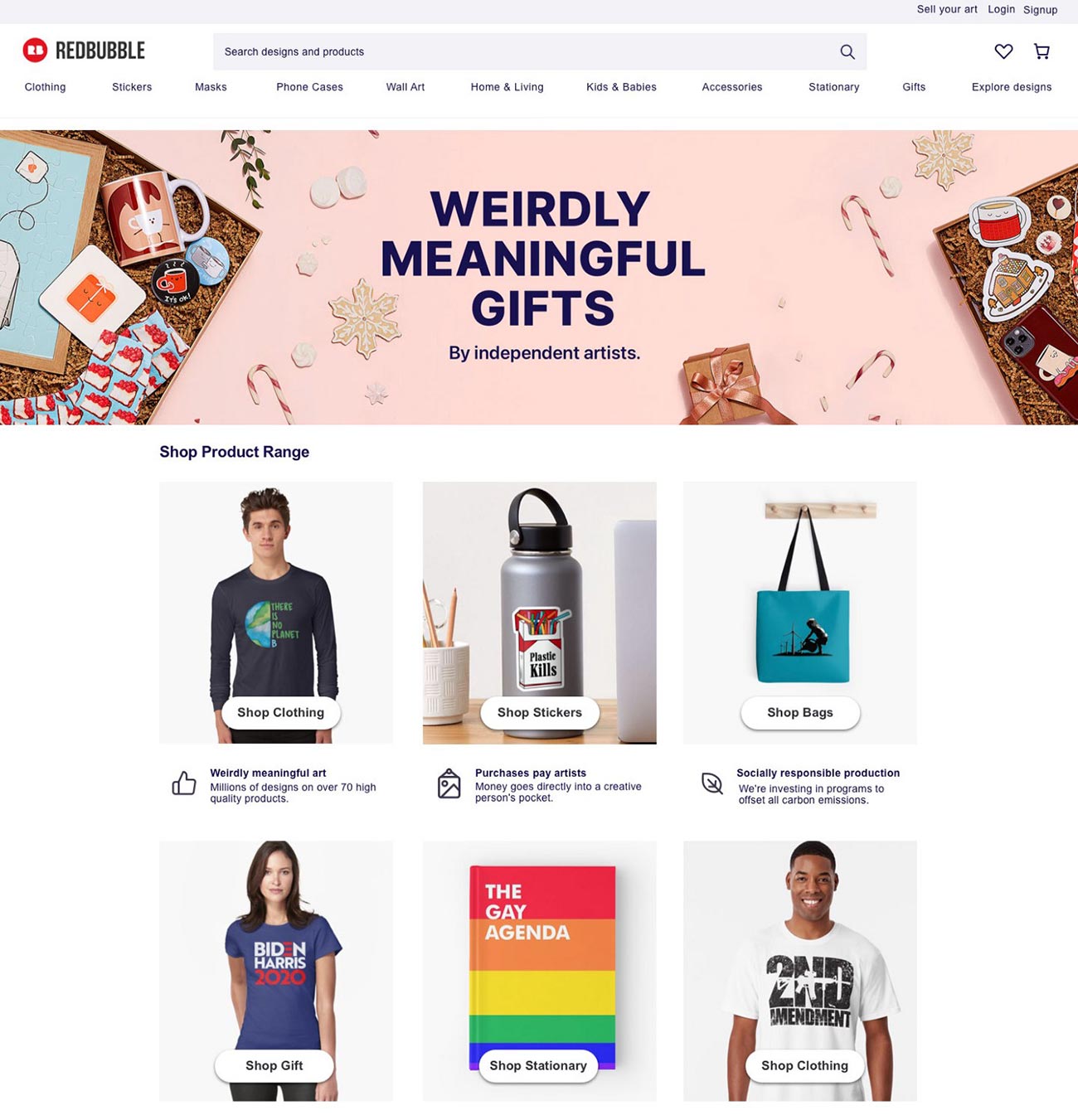
Redbubble is a global online marketplace for print-on-demand products based on user-submitted artwork. The company operates primarily on the Internet and allows its members to sell their artwork as decoration on various products. The company offers free membership to artists who maintain the copyrights to their work, regulate their prices, and decide which products may display their images.

Through initial user research, I discovered a lot of designs on Redbubble with the subjects on political parties, non-profits, and even companies. A variety of products and designs on the platform promote political parties’ and non-profits’ goals. But they never receive any benefit from those sales. Buyers like to buy those designs that present their social and political points of view. Also, they love to support their favorite non-profits and political parties.
“I use the Redbubble to buy stickers for my laptop and t-shirt that represent my political and social point of view. I know what I want before I get to Redbubble, I just type down on the search bar my idea.” Quoted from an interview on December 11, 2020
These types of buyers are big opportunities for political parties and non-profits organizations to promote their idea and to raise more money for their campaigns and future goals. Also, there is an opportunity to hire a better designer and artist for their campaign designs. So, I asked…
How might we encourage political parties and non-profit to have an online store on Redbubble?
User types and personas were defined during our initial user research were two types: (1) designers; (2) buyers. After the review and analysis of our interview, we determined Redbubble can have three user types:
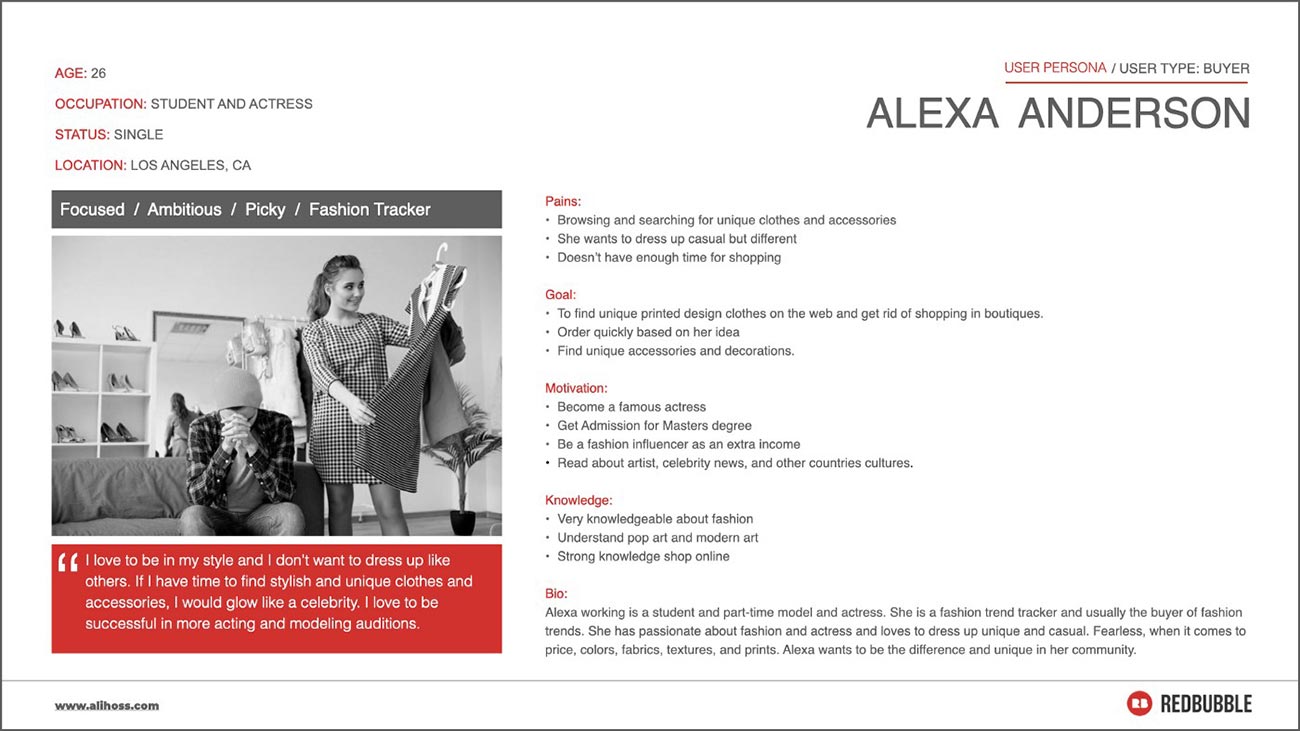
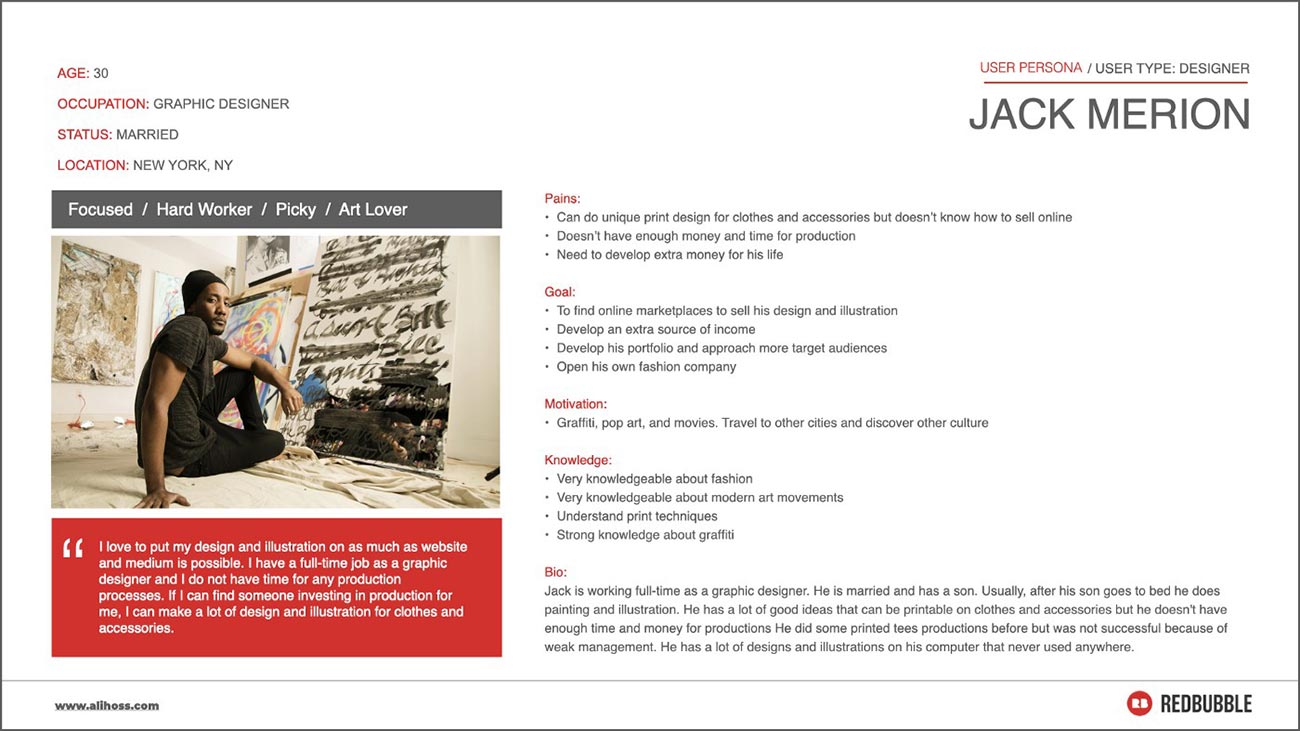
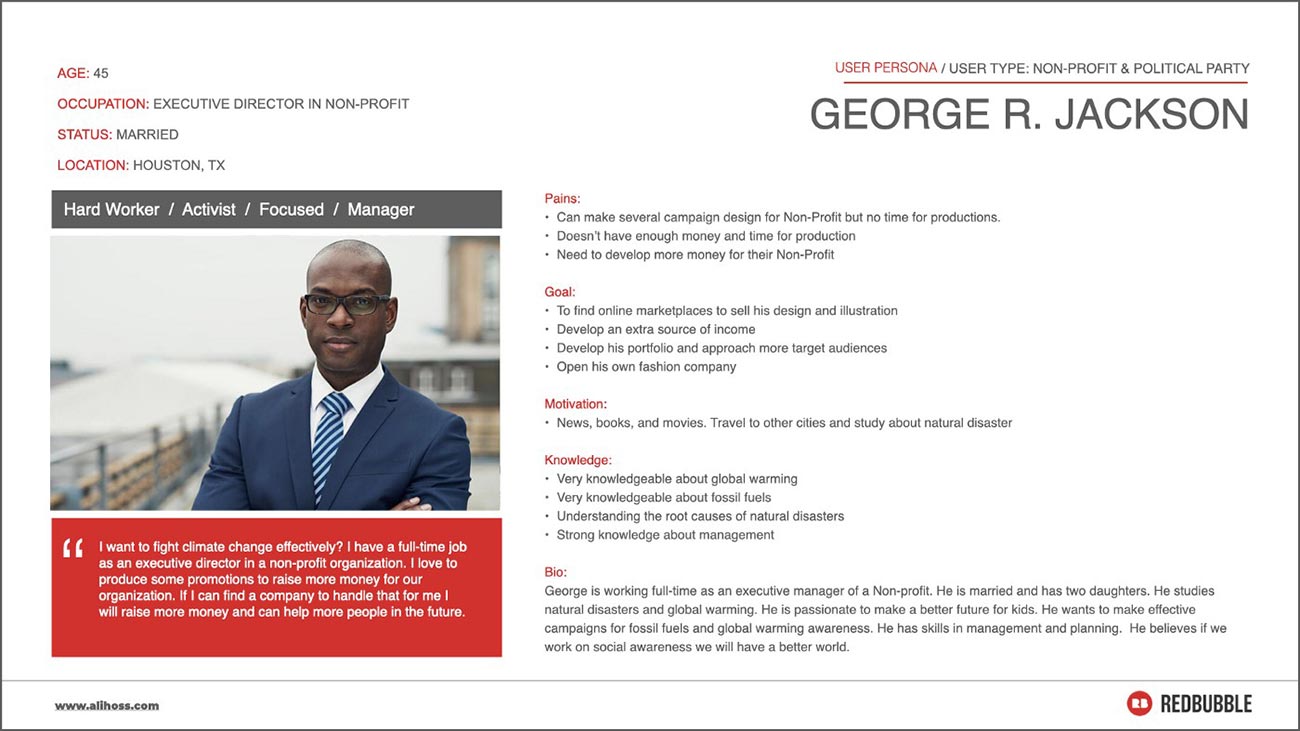
For this project, I focus on political parties and non-profits. Based on user interviews, I created three types of personas. While each persona’s goals were different. All three types of users had issues with finding the right way to reach their goals.
This project was performed during an 8-week design process, based on previously conducted user research. Each step took one week. We interviewed a small group of buyers and designers who used Redbubble several times. The entire design from the problem statement to the usability report is developed by me.
After all interviews and competitor analysis for user research, I tried to find my path to find some solutions for the Redbubble platform to make more opportunities for exciting and possible users.
In order to figure out a real solution, I followed the process below for the design phase:
(Determine the selling processes and any areas of opportunity to focus on)
Referencing the personas created previously for designers, buyers, political parties, and non-profit, I tried to find new opportunities and main actors in the current Redbubble selling and ordering process. I made some assumptions based on interviews with each user type. I mapped my sprint based on three types of users and Redbubble.
The sprint map created an opportunity area of focus based on the “How Might We…” question we found before. Of course, this led to a new question: how we can help political parties and non-profits make more money by selling products or raise donations on the Redbubble platform. At some point, I would need to address that question.
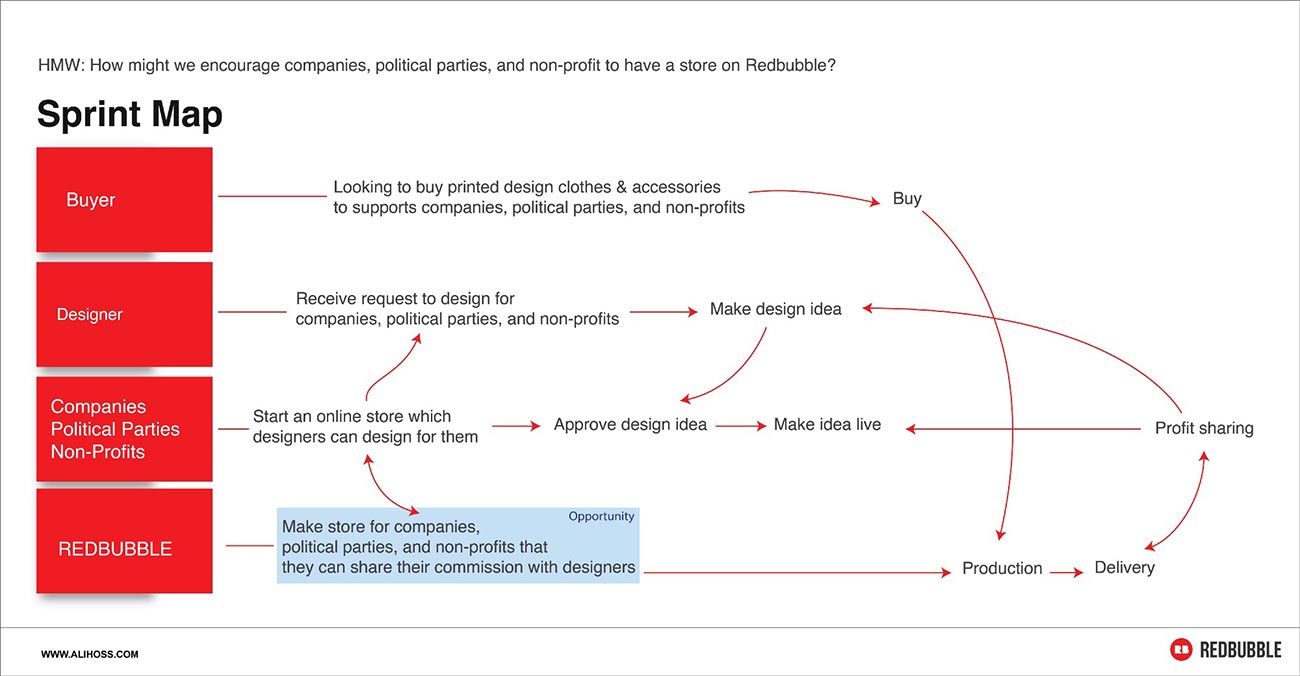
(Study about competitors and influencers for potential ideas or insights)
Finally, I got a pen and paper. I studied some direct and indirect competitors. I conducted some Lightning Demos, examined sales features on Amazon, eBay, and Walmart. Also, I studied some political parties and non-profits websites such as “350.org”, “democrats.org”, and “gop.gov”

Clockwise from top left: 1) Political party and non-profit can have private and a public online store; 2) Hiring designer on Redbubble; 3) They can have specific package and shipping label; 4) Promote their listing; 5) Affiliate marketing and share money with influencers; 6) buyers can see the amount of money that political party and non-profit will get with their order; 7) API or integration with another marketplace such as Amazon, etc.; 8) Buyer can share their experience on social media
After the Lightning Demos and Crazy 8, I began to bring selected concepts on a hand-drawn wireframe and then low-fidelity wireframe that allowed our users to browse for completing some tasks. I designed two separate wireframes:
1- Seller Wireframe: Starting with the sign-up process for political parties and non-profits to have an online presence on Redbubble. Other tasks have promoted a listing, hiring a designer, launching a design contest.
2- Buyer wireframe: Starting with the shopping process and how people can donate during the shopping process.
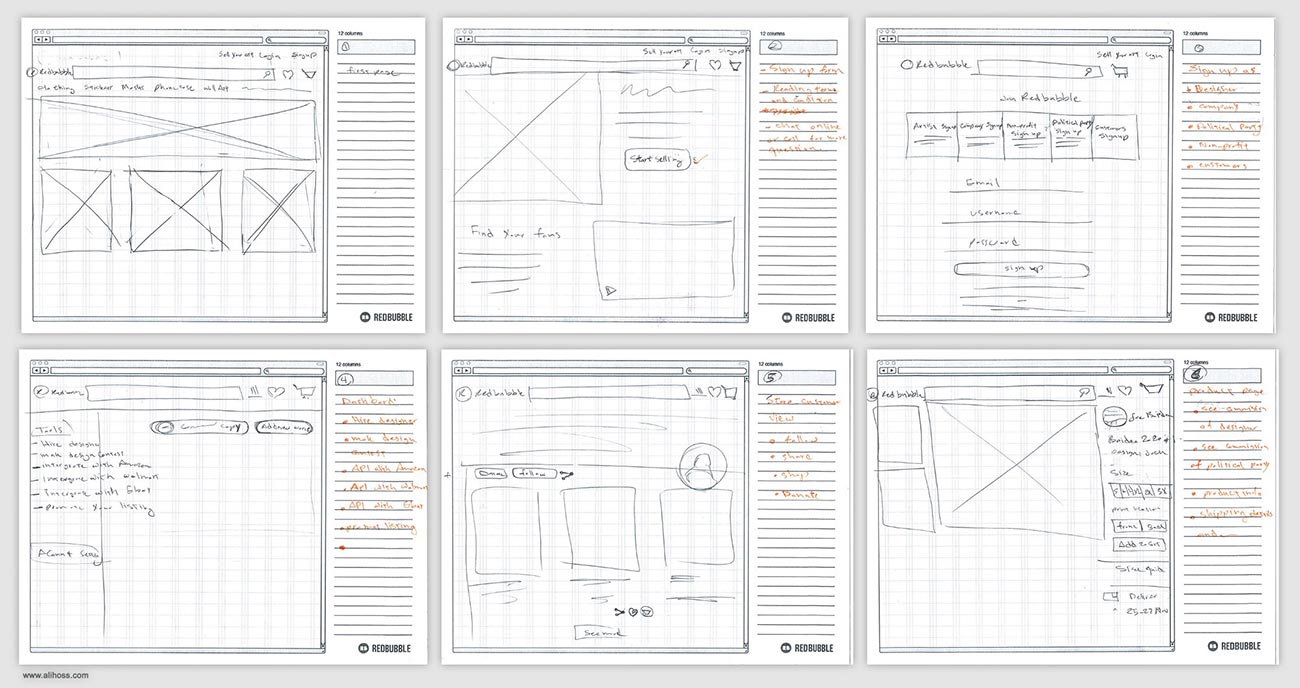
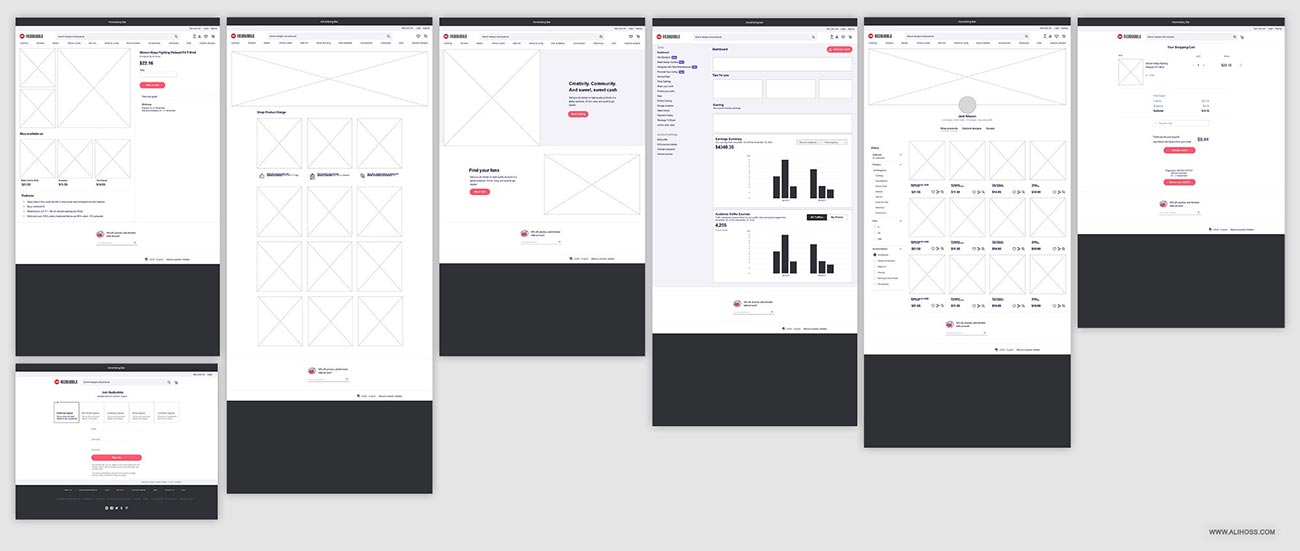
In the prototype, my main goal was to keep Redbubble’s brand identity as it is with some minimal changes. I activated all buttons and interactions to give users in the usability test process the feel of the real website.

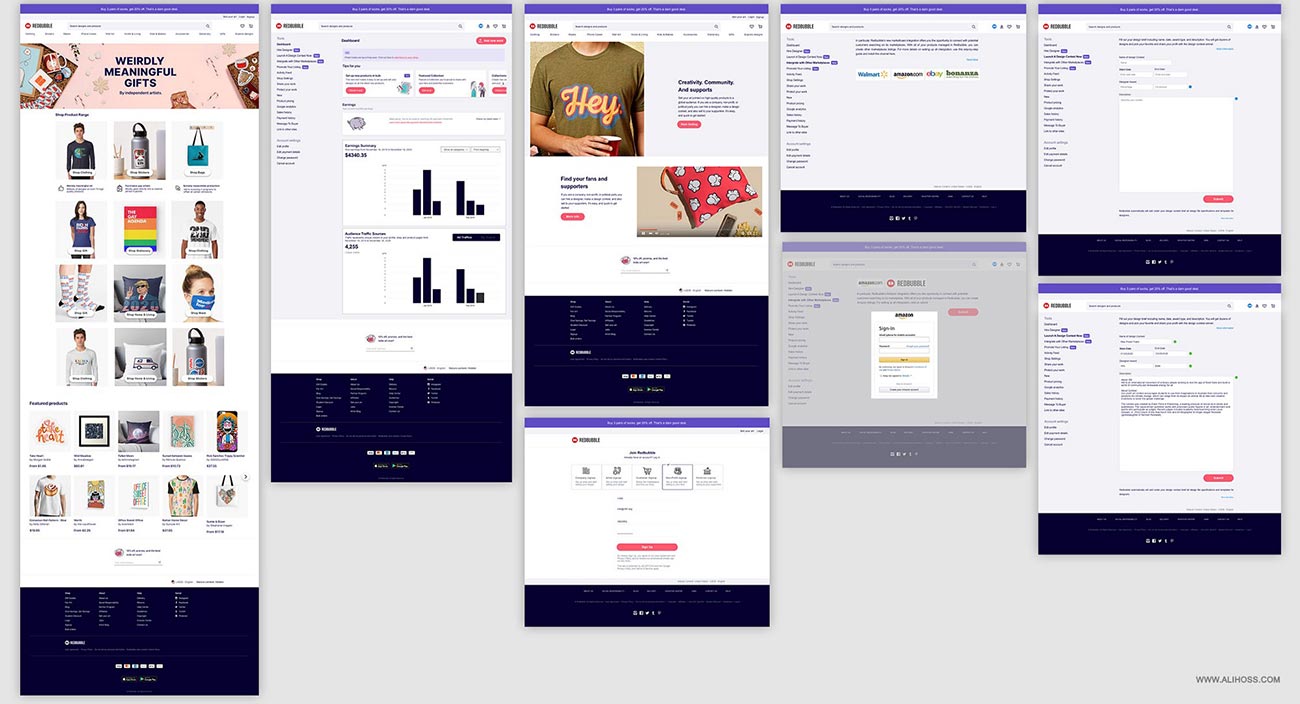
I interviewed six users from 18 to 44 years old. I would have liked to get more users, but these participants nicely represent our three types of personas.
After warm-up questions and learning more about each interviewee’s experience with Redbubble and other similar websites, I gave them my prototype to test the scenarios below:
Scenario #1: Imagine you owned a non-profit and you heard you can sell your products on Redbubble to raise more money to reach your goals. I would like you to do the sign-up process and open an online store on Redbubble
Scenario #2: You have an online store on Redbubble now. Could you please launch a new design contest here?
Scenario #3: I explained to users what is API and integration with other online marketplaces. Could you please integrate Redbubble with amazon?
Scenario #4: For this task, I would like you to play the role of buyers. Please start to buy one of the products and review all processes.
(All revisions were based on qualitative research data)
During the testing of those scenarios, I realized that users immediately addressed some new pain points regarding the selling, shopping, and donation process. Some of these points were about interface design, and others were about the user experience. You can see some of those revisions below:
Most users mentioned the process of sign-up is excellent and straightforward. Also, they agreed with the general UI design and sign-up categories. Some thoughts:
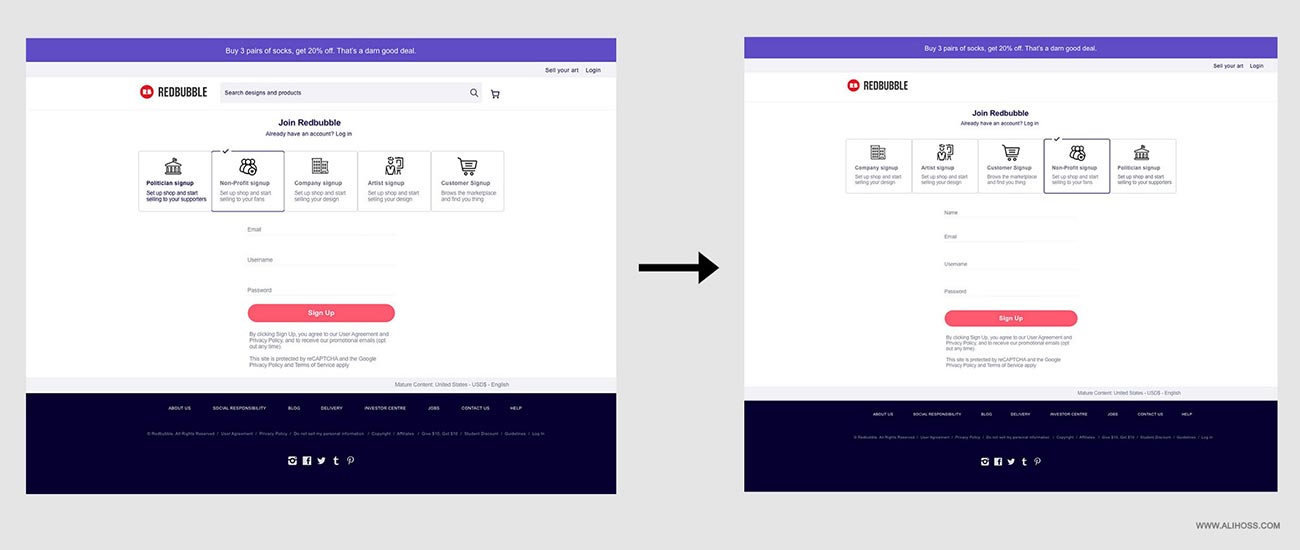
#2: Launch Design Contest
Users mentioned that launching a design contest is good and can encourage political parties and non-profits to have better designs and hire better designers. Some thoughts:
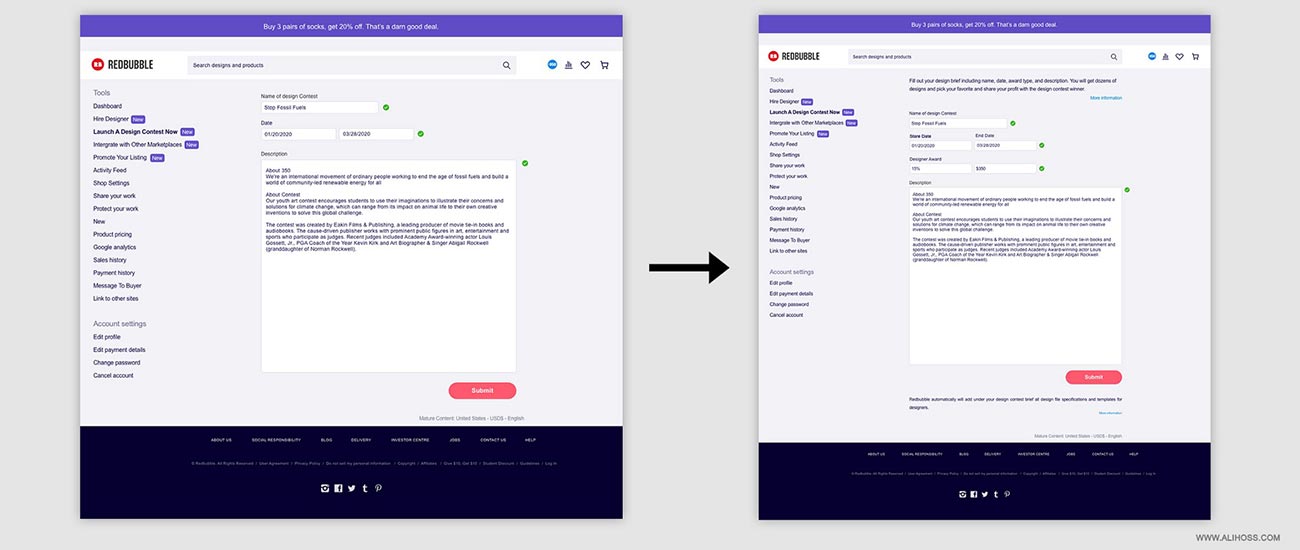

#3: Interaction (API)
Users agree on the idea of selling products on well-known online marketplaces like Amazon, Walmart, and eBay. They believe people trust them more because of payment security purposes. Some thoughts:
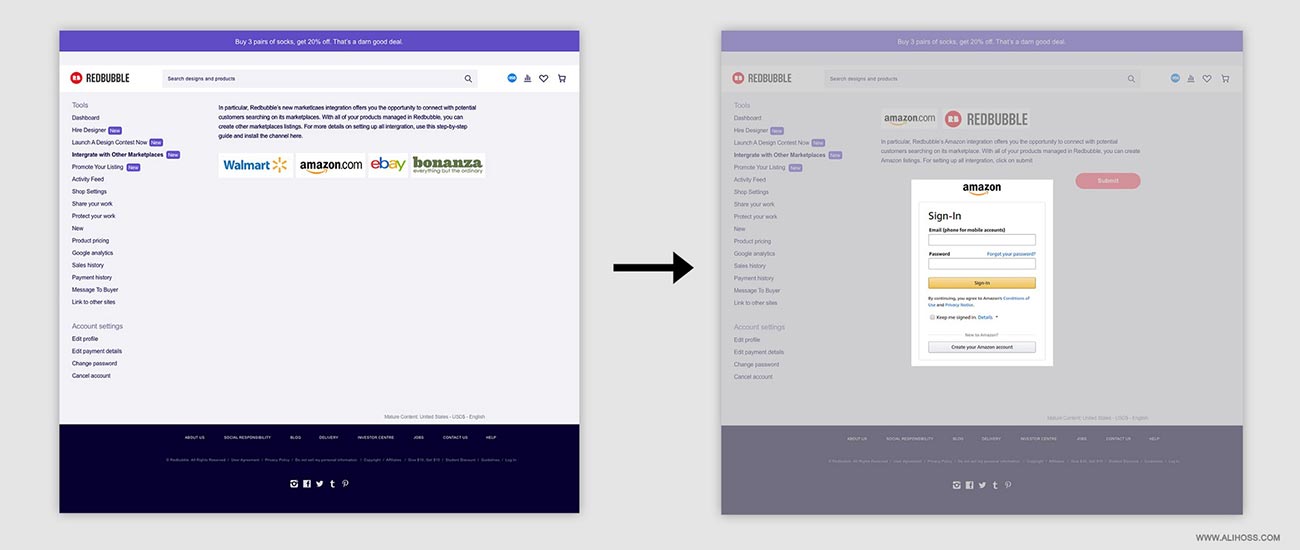
#4: Shopping & Donation
Users believe the donation during the shopping process is a good idea. They like the idea of showing the amount of money that non-profits or political parties will get out of that order. Some thoughts:
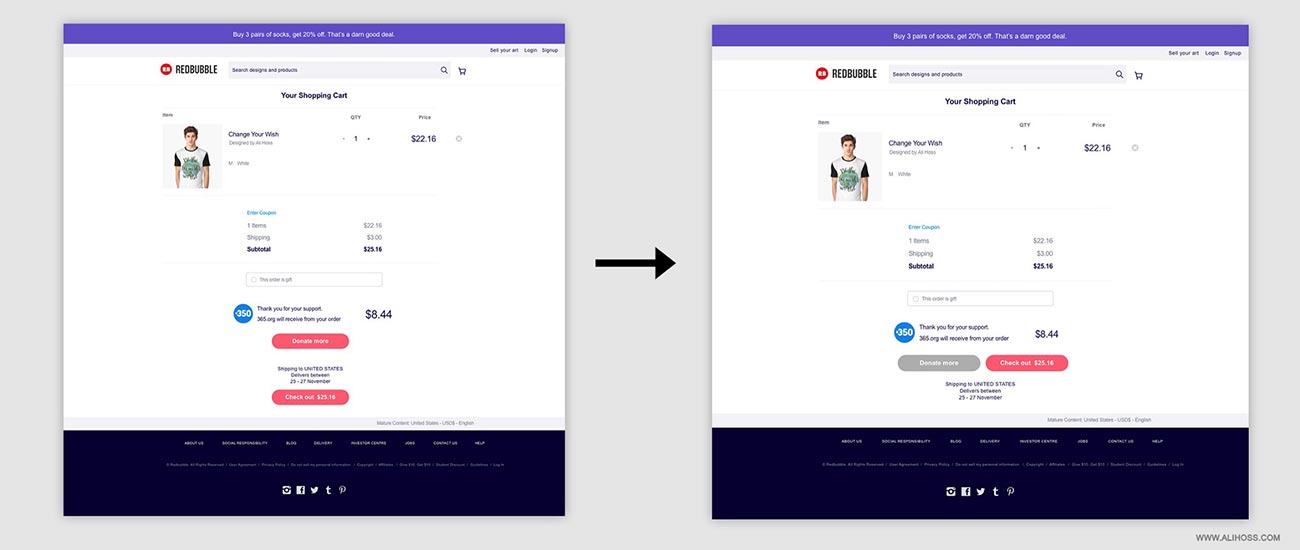
During this eight-week design process, I started from a single question to a tested prototype that brought new ideas to consider. And best of all, adding some features to the Redbubble to encourage political parties and non-profits to have an online store there and sell to their fans and supporters.
“It was really nice that I could support my favorite non-profit and buy some products from them.” — Quoted from an interview on December 11, 2020
This enhancement could be an advantage for Redbubble. I would recommend some changes including integration with other online marketplaces, launching a design contest, and encouraging political parties and non-profit to have an online store on Redbubble.
Additional design iterations should also be completed to promote product listing. Having a feature of hiring a designer for your product design. Additional usability tests should be scheduled to evaluate the updated prototype.